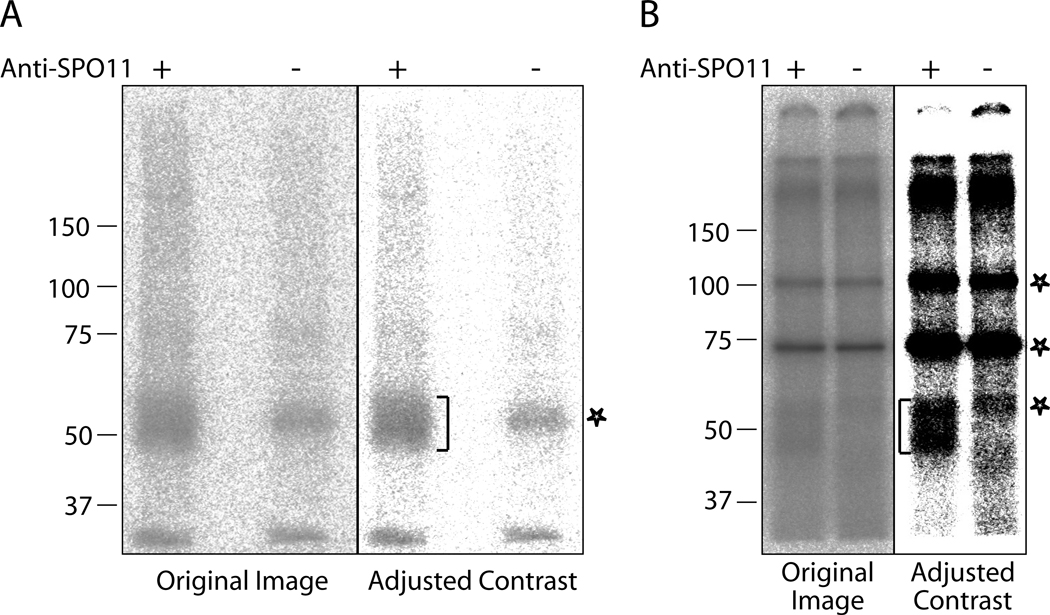Fig. 1.
Examples of labeling of mouse SPO11-oligonucleotide complexes. SPO11-oligonucleotide complexes were immunoprecipitated from wild type testis lysate and labeled with TdT and [α-32P] dCTP. Labeling specific to SPO11-oligonucleotide complexes is marked with brackets, and non-specific labeling is marked with asterisks. In both A and B, the left panel is the original image and in the right panel contrast has been adjusted with Photoshop. A. Labeling reactions were resolved on a 7.5% Ready gel (Bio-Rad). Nonspecific labeling at around 55 kD in the lane without SPO11 antibody (mock immunoprecipitation control) is associated with contaminant(s) from the TdT (GE healthcare). Input to lanes: about 2.6 testes equivalent. B. Labeling reactions were resolved on an 8% SDS gel. Nonspecific bands at 75 and 100 kD, as well as the smear at about 60 kD in the lane without SPO11 antibody is associated with contaminants from the TdT (New England Bioloabs). Input to lanes: about 6 testes equivalent.

